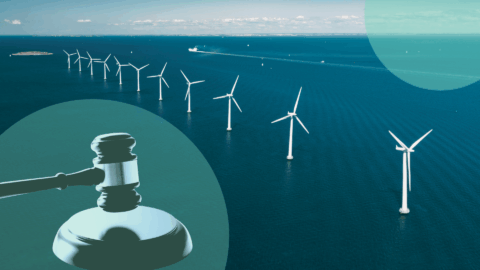
A New Energy Task Force for North Carolina: Putting Affordability First
It’s a new dawn. It’s a new day. It’s a new energy task force in North Carolina, and EDF is honored to have a role in this state initiative to meet the challenge of rising electricity demand. If we fail to build enough electricity generation to keep up with rising demand, that will mean bill shock for NC households. Many people have opened the highest electricity bill of their life this summer, a trend that will continue if we don’t find a way to get costs under control while phasing out our coal fleet and finding the right mix of next-generation technologies.
We’re in a time of broader uncertainty, with federal policy in flux and high interest rates challenging developers and utilities who need to make investments in their growing systems.
But North Carolina has a history of innovating in power sector regulation, regardless of what is happening in Washington, DC. The Clean Smokestacks Act in 2002 helped clean up an aging coal fleet, and House Bill 951 in 2021 set power sector emission reduction targets to put the state on a path towards a cleaner, more diversified energy generation portfolio. We must set our own course and learn from other states who are experimenting with new ways to meet power demand, which is rising faster than traditional power plants like coal, gas or nuclear, and can realistically be built.
We have to expand the range of options on the table to meet a surge in demand from data centers and new industrial sources. That means tapping into batteries on people’s homes, incentivizing large facilities to reduce their usage during peak demand times and building as much of the quickest-to-market resources we can — which are primarily solar and batteries.
Two steps forward, one step back
We took a step backwards from that vision this year with the passage of Senate Bill 266 (S266), which relies on the false hope that slowing our investment in clean energy will save ratepayers money. But we can’t meet rising demand simply by running more aging, dirty coal and gas. Not only does this lead, as it did in June, to the utilities requesting emergency exemptions to exceed local air pollution limits, but it puts regular households on the hook for rising natural gas prices, which the federal Energy Information Agency projects to rise as demand rises, while supply remains flat.
That’s a big part of why an N.C. State University study showed S266 could cost North Carolinians an additional $23 billion in power bill payments through 2050. Instead of modernizing the grid with affordable clean energy, the bill would encourage Duke Energy to rely on older plants and costly gas-fired facilities. EDF-commissioned analysis also found S266 would saddle households with nearly $90 million in extra annual costs to finance power bill discounts for the state’s largest commercial and industrial energy users. And an analysis of the last seven years of power bills shows that volatile gas prices are responsible for up to 67% of the recent rise in North Carolina energy costs.
As EDF’s NC State Director David Kelly put it in this WRAL article, S266 is “an energy tax in disguise,” forcing families to pay more for gas plants we don’t need, and that our climate and working families can’t afford. Doubling down on expensive fossil fuels guarantees more of the same: higher bills and more pollution.
Leading the pack or falling behind?
But S266 does not mean that North Carolina can’t chart a cheaper, cleaner course. The NC Energy Policy Task Force is composed of a set of experts, assembled to ensure that as our state’s energy needs grow, we meet them affordably and transparently.
Along these lines, the new Task Force will tackle two critical priority areas:
- Large Load Growth Management
- North Carolina needs a plan for integrating large industrial power needs without overburdening residents or rolling back clean energy commitments. The Task Force will examine the full set of solutions — from accelerating clean generation to improving grid efficiency — so that rapid demand growth can be met fairly and sustainably.
- Modeling & Transparency
- Right now, the long-term utility planning process is often opaque and inaccessible to the public. Utilities make multi-billion-dollar investment decisions with little visibility into the assumptions behind them. The Task Force will change that by creating a public, parallel modeling process — based on the same tools used by utilities — so stakeholders can see exactly how decisions are made, test assumptions, and explore cleaner, more affordable options.
Clean energy is the affordability solution North Carolina needs
North Carolina households are already feeling the pinch from volatile fuel prices and rising bills. By tracking best practices nationwide from other states tackling the same challenges, the Policy Energy Task Force can build consensus around a toolbox of policies for our General Assembly and Utilities Commission to protect ratepayers, meet our climate goals, and build a stronger energy future for everyone in North Carolina.












